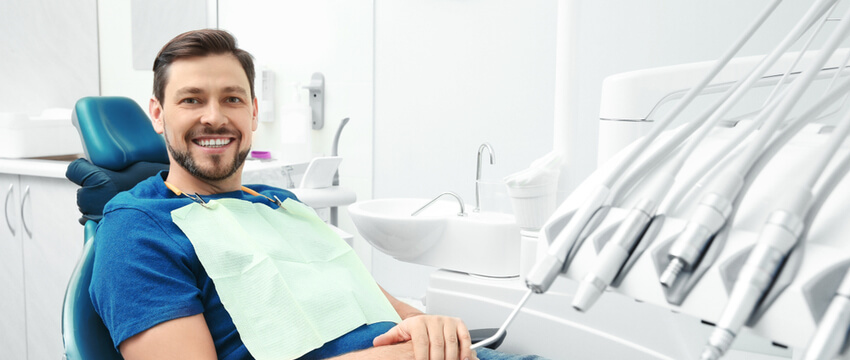For individuals suffering from extensive decay or misshapen teeth, composite bonding or fillings are often insufficient to preserve the tooth’s structure or adequately alter its appearance.
Dental crowns cover, protect, and strengthen your teeth to restore your smile’s natural beauty. Going to the dentist can be daunting if you have severe oral health issues, but understanding the dental crown procedure can help alleviate any concerns.
What are Dental Crowns?
Dental crowns are caps or coverings for a decayed or damaged tooth that help restore your smile’s function and aesthetic appearance.
Dental crowns are constructed from gold alloy, ceramic, or porcelain-fused-to-metal (PFM). For dental crowns placed towards the front of the mouth, ceramic crowns are most suitable and realistic. PFM dental crowns offer longer-lasting durability for premolars or molars as they can withstand the increased bite force and grinding motions these back teeth sustain.
Who Needs Dental Crowns?
If you have had dental implants placed, broken a tooth, suffer from deep decay, or had root canal therapy, your dentist may recommend getting dental crowns.
What Happens During a Dental Crown Procedure?
There are several stages to the dental crown procedure. From preparation to fabrication to placement, the entire process takes around 2-3 weeks.
-
Numbing the Area
To ensure you are as comfortable as possible during the dental crown procedure, your dentist applies a numbing gel and a local anaesthetic to the affected tooth. The numbing agent should take effect within several minutes, after which time, you’ll only feel slight pressure as the dentist takes impressions and prepares your tooth.
-
Creating a Full Mouth Impression
To achieve the most natural-looking smile and help determine the correct bite alignment, your dentist needs to take a complete mouth impression using a horseshoe-shaped rubber tray that is filled with polyvinyl siloxane or alginate. The tray is pressed firmly onto your teeth, and then when it is set, it is removed and filled with modelling material to create the perfect set of model teeth to send to the lab.
At this point, your dentist may record the ideal tooth shade for your new crown to ensure it blends seamlessly with your natural teeth.
-
Tooth Preparation
Before the dental crown fabrication and placement, the dentist needs to prepare the affected tooth. Tooth preparation varies according to the nature and severity of your oral health issues.
If you had dental implants embedded, you need to wait until the titanium post fuses with your jawbone, and the abutment is placed before the dentist can take impressions for the dental crown.
Individuals with a broken tooth or severe cavities require removal of the decayed tissue before the tooth has a thin layer of enamel shaved off its exterior, and the sides are shaped into a cone to accommodate the dental crown.
-
Single Tooth Impressions
Once the tooth is prepared, your dentist takes an impression of the tooth’s core to create a model of the dental crown’s interior cavity. The dentist covers the prepared tooth with polyvinyl siloxane and fills an impression tray with the same material. They will ask you to bite down hard onto the tray and maintain contact for up to five minutes.
When the impression sets, the dentist removes the tray and inspects the mould for imperfections. Any air bubbles or flaws will lead to poorly fitted crowns. You may need to repeat the process several times until you create a satisfactory impression.
The single tooth impression and full mouth impression, and any other pertinent data are sent to an off-site lab where the permanent dental crown fabrication takes place.
-
Fitting a Temporary Crown
To protect your tooth while waiting for your permanent restoration, you are fitted with a temporary dental crown. This crown prevents the prepared tooth core from moving and reduces discomfort and sensitivity due to exposed dentin.
The temporary crown is fitted in the dentist’s chair and created using the original full mouth mould of your tooth. Acrylic composite resin is poured into the mould and placed over your tooth. Once set, the dentist smooths, shapes, and polishes the crown, then cements it in place using a temporary dental adhesive.
-
Cementing the Permanent Dental Crown
When the permanent crown is ready (typically 2-3 weeks after your initial appointment), you’ll have a second appointment to have the crown cemented in place.
The dentist numbs the area, removes the temporary restoration, and thoroughly cleans the prepared tooth core to remove any residual adhesive or plaque build-up. They then place the permanent crown over the core to check the fit and adjust the tooth as necessary.
When you and your dentist are satisfied with the fit, the dental crown is cemented in place with a strong bonding agent. The dentist performs a final bite check, and then you are ready.
Regain Your Smile and Confidence at My HM Dentist, Kellyville
If you want to enhance your smile and restore functionality to your teeth, contact the team at My HM Dentist in Kellyville at (02) 9158 6379 to book a consultation and determine whether you are a candidate for dental crowns.
Note: Any surgical or invasive procedure carries risks. Before proceeding, you should seek a second opinion from an appropriately qualified health practitioner.





